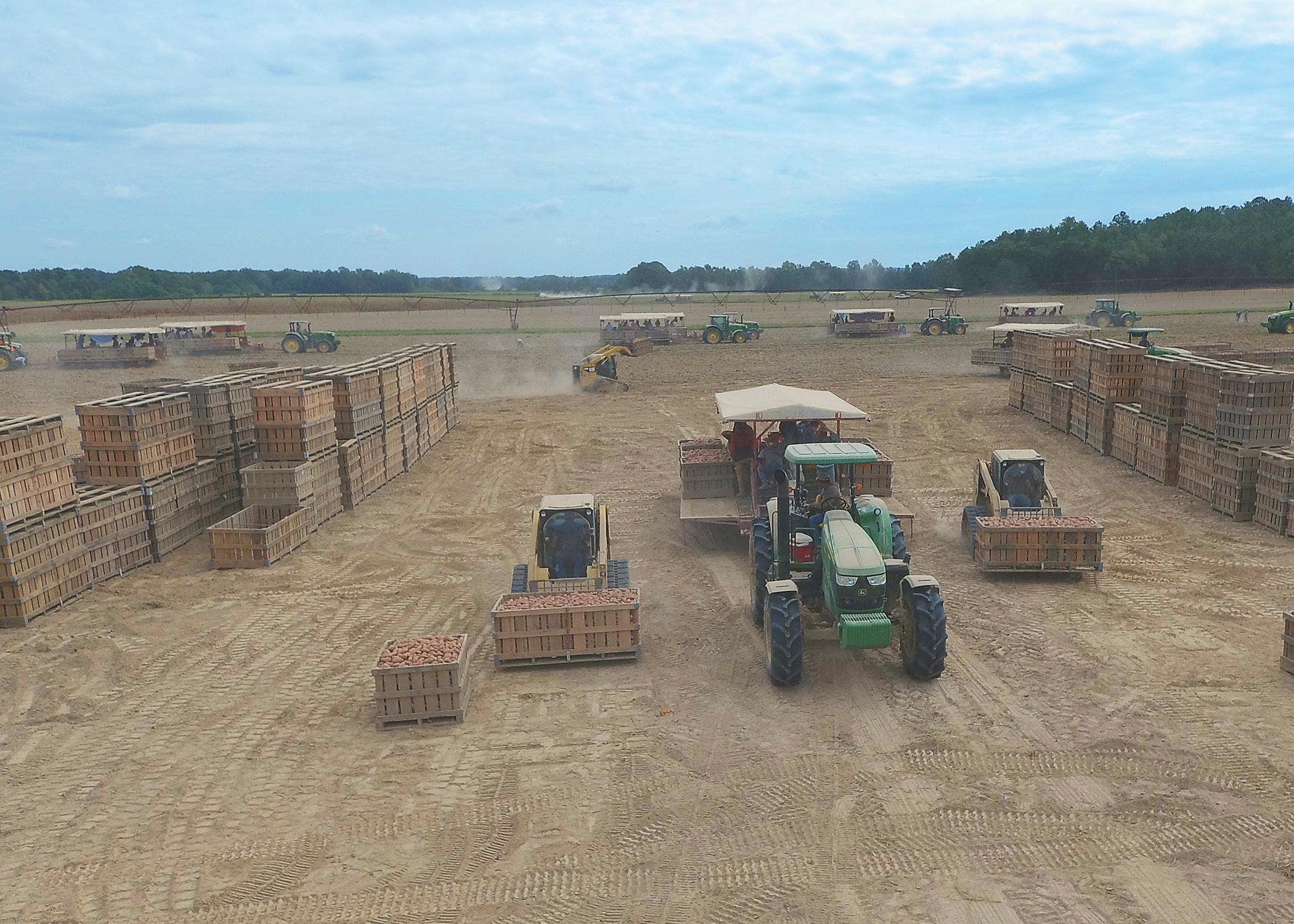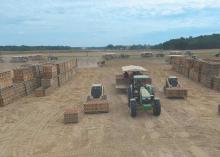Information Possibly Outdated
The information presented on this page was originally released on September 25, 2020. It may not be outdated, but please search our site for more current information. If you plan to quote or reference this information in a publication, please check with the Extension specialist or author before proceeding.
Sweet potato growers face challenges
STARKVILLE, Miss. -- This year’s sweet potato harvest is ramping up, and initial reports from the field indicate an average yield for 2020.
The variability in expected yield from field to field can be chalked up to location and soil moisture, said Mark Shankle, a researcher and professor with the Mississippi Agricultural and Forestry Experiment Station at the Pontotoc Ridge-Flatwoods Branch Experiment Station.
“Some fields benefited from timely rains,” Shankle said, “while others either received not enough or too much.”
Trent Barnett, an agent with the Mississippi State University Extension Service in Calhoun County, offered a promising forecast for his area. About a third of the state’s crop is planted there. For the last five years, the state’s total sweet potato acreage has hovered between 27,000 and 30,000 acres.
“I would say a good estimate for Calhoun County acreage would be 9,000 to 10,000 acres,” Barnett said. “I am excited about what I have seen of the sweet potato crop at this time, but we are still early in the season.”
Roughly one-fifth of this year’s planting had been harvested as of Sept. 21, according to a recent report from the U.S. Department of Agriculture National Agricultural Statistics Service. So far, 64% was graded in fair condition, with 26% rated good.
In the age of COVID-19, the amount of water in sweet potato producers’ rain gauges has hardly been their most pressing challenge. Labor and product delivery are two issues that have presented difficulties for growers.
“Sweet potato production requires a tremendous labor force, and with the onset of the COVID-19 pandemic, the greatest challenge has been the availability of workers,” Shankle said. “Movement of product from storage sheds to food-processing facilities, restaurants and commercial cafeterias has been interrupted due to the COVID-19-related slowdown or complete shutdown in certain areas. This has required some growers to establish new marketing channels to sell their crop.”
Extension agricultural economist Alba Collart said growers have to take extra steps to protect the health of their workers, including social distancing.
“As the harvest season begins, farmers face uncertainty regarding how COVID-19 will impact the availability of workers and how to handle and prevent COVID-19 cases in their farms and communities,” Collart said.
The pandemic has not made a major dent in sweet potato market prices.
“So far, this year’s average price for a 40-pound carton wholesale is $25.68. That is near last year’s average of $26 and higher than the five-year average of nearly $24 from 2015-19,” Collart said.
MSU supports the state’s sweet potato industry with research plots, new variety testing and other activities. Research at the Pontotoc Ridge-Flatwoods Branch is driven by input from industry stakeholders.
“Recent sweet potato research includes soil fertility requirements for different commercial varieties, replant scenarios based on missing plants, and evaluation of new cultivars for commercial production for environmental performance, insect tolerance and yield potential,” Shankle said. “We are also studying sweet potato tolerance to off-target movement of auxin herbicides and new technologies that promote propagation of certified clean sweet potato plant material in greenhouses.”








